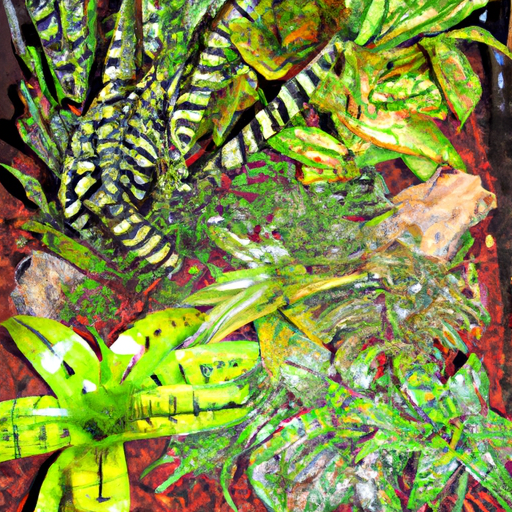Terrarium Plant Selection: Choosing The Right Plants For A Natural Reptile Habitat
In this article, you will discover the art of selecting the perfect plants for a terrarium, creating an ideal home for your reptile companion. The right plant selection not only adds a touch of natural beauty but also contributes to the overall well-being of your reptile, providing a stimulating and enriching environment. By understanding the unique needs of different reptile species and exploring the various plant options available, you will be equipped with the knowledge to create a thriving, natural habitat that your reptile will truly enjoy. Get ready to embark on a journey of plant selection and transform your terrarium into a lush, botanical wonderland!
Factors to Consider in Terrarium Plant Selection
When it comes to creating a natural and comfortable habitat for your reptile friend, choosing the right plants is crucial. Not only do plants add beauty and visual appeal to the terrarium, but they also play a vital role in maintaining the overall health and well-being of your reptile. There are several factors that you must take into consideration when selecting plants for your terrarium. These factors include the light requirements, temperature and humidity tolerance, size and growth rate, toxicity, and maintenance needs of the plants.
Light Requirements
Just like any other living organism, plants require light to photosynthesize and thrive. Different plant species have varying light requirements, ranging from low-light to high-light conditions. Before selecting plants for your terrarium, it is important to determine the lighting conditions of the specific reptile habitat. For example, if you have a terrarium with bright and direct sunlight, plants that thrive in full sun, such as cacti and agave, would be suitable choices. On the other hand, if your terrarium receives limited and indirect light, you may opt for shade-tolerant plants like ferns or snake plants.
Temperature and Humidity Tolerance
Reptiles require specific temperature and humidity levels to survive and thrive. Therefore, it is essential to choose plants that are tolerant of the temperature and humidity conditions in your reptile’s habitat. Tropical reptiles, for instance, require higher humidity levels compared to arid-dwelling reptiles. Some plants, such as bromeliads and pothos, thrive in tropical environments where humidity levels are consistently higher. On the contrary, plants like cactus and yucca are adapted to arid conditions and can tolerate lower humidity levels. By selecting plants that can thrive in the specific temperature and humidity range of your reptile habitat, you ensure a harmonious environment for both your reptile and the plants.
Size and Growth Rate
Another important factor to consider when selecting plants for a terrarium is the size and growth rate of the plants. It is essential to choose plants that will not outgrow the terrarium and create an overcrowded and uncomfortable environment for your reptile. Additionally, plants with rapid growth rates may require more frequent pruning and maintenance. By selecting plants with appropriate sizes and growth rates, you can create a balanced and aesthetically pleasing terrarium that will provide ample space for your reptile to move around.
Toxicity
It is crucial to ensure that the plants you choose for your terrarium are non-toxic to your reptile. Many plants, while safe for humans, can be harmful or even fatal if ingested by reptiles. Some common plants to avoid in reptile habitats include dieffenbachia, elephant ear, daffodil, ivy, and pothos. Always research the toxicity of the plants before introducing them into the terrarium to prevent any potential harm to your reptile.
Maintenance Needs
Finally, consider the maintenance needs of the plants you select for your terrarium. Some plants may require frequent watering or specific fertilization, while others may need minimal care. It is essential to choose plants that align with your ability and willingness to provide the necessary care and maintenance. By selecting plants with similar care requirements as your reptile, you can create a well-balanced habitat that is easy to manage and sustain.
Plants Suitable for Arid Reptile Habitats
Agave
Agave is a popular plant choice for arid reptile habitats due to its ability to tolerate drought-like conditions. This succulent plant requires infrequent watering and can thrive in sandy soil. Agaves can add a dramatic and tropical feel to your terrarium with their rosette-shaped leaves and unique growth patterns.
Aloe Vera
Aloe vera is not only a beautiful and visually appealing plant, but it also offers several benefits for your reptile. This succulent plant provides natural soothing and healing properties, making it a great addition to a reptile habitat. Aloe vera requires bright indirect light and minimal watering, making it suitable for arid terrariums.
Cactus
Cacti are iconic symbols of arid environments and are well-suited for reptile habitats with low humidity levels. With their unique shapes and spiky exteriors, cacti can serve as natural decor in your terrarium. These hardy plants require minimal watering and can withstand the harsh conditions of arid habitats.
Yucca
Yucca plants are known for their striking and architectural appearance, making them ideal for adding visual interest to a reptile habitat. They are well-adapted to arid conditions and can tolerate low humidity levels. Yuccas require bright light and infrequent watering, making them relatively low maintenance options for arid terrariums.
Snake Plant
Snake plants, also known as Sansevierias, are excellent options for arid reptile habitats due to their ability to thrive in low-light conditions. These hardy plants have long, upright leaves with interesting patterns, adding a unique touch to your terrarium. Snake plants require minimal water and can tolerate neglect, making them suitable for beginners or those with busy schedules.
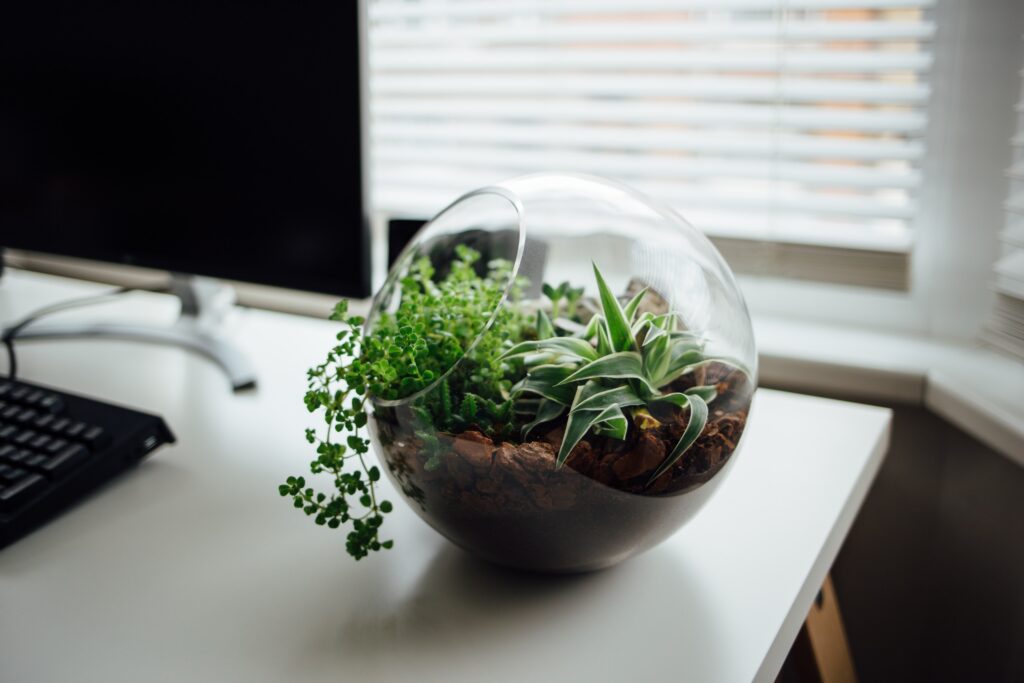
Plants Suitable for Tropical Reptile Habitats
Ferns
Ferns are a popular choice for tropical reptile habitats due to their love for high humidity levels. These lush green plants provide a natural and jungle-like ambiance to the terrarium, creating a perfect environment for your reptile. Ferns require indirect or filtered light and regular misting to maintain their humidity needs.
Philodendrons
Philodendrons are versatile and widely available plants that are suitable for tropical reptile habitats. These climbing vines can be grown on the ground or trained to climb on natural structures within the terrarium. Philodendrons require bright indirect light and regular watering to thrive.
Pothos
Pothos, also known as Devil’s Ivy, is a popular choice for reptile owners due to its ease of care and tolerance of a wide range of conditions. Pothos can tolerate low light conditions, making it suitable for terrariums with limited natural light. This trailing vine plant requires regular watering and can help maintain humidity levels within the terrarium.
Bromeliads
Bromeliads are beautiful tropical plants that add color and vibrancy to reptile habitats. These epiphytic plants have striking foliage and often produce long-lasting flowers. Bromeliads require bright indirect light and high humidity levels. They are often mounted on branches or placed in the soil within the terrarium.
Spider Plant
Spider plants, scientifically known as Chlorophytum comosum, are well-suited for tropical reptile habitats. With their long arching leaves and cascading stems, spider plants add a touch of elegance to any terrarium. These plants prefer bright indirect light and require regular watering to maintain their humidity needs.
Plants Suitable for Semi-Aquatic Reptile Habitats
Java Fern
Java fern is a popular choice for semi-aquatic reptile habitats due to its ability to grow both submerged and partially submerged. This plant adds a natural and lush feel to the aquatic part of the terrarium. Java fern requires low to moderate light and can tolerate a wide range of water conditions.
Anubias
Anubias is another excellent choice for semi-aquatic reptile habitats as it can thrive both submerged and partially submerged. This plant features broad leaves that provide hiding spots and resting places for reptiles. Anubias requires moderate light and regular watering to prevent drying out.
Water Hyacinth
Water hyacinth is a floating plant that adds beauty and functionality to semi-aquatic reptile habitats. It provides shade, helps in maintaining water quality, and offers refuge for reptiles. Water hyacinth requires bright light and regular monitoring to ensure it does not overtake the water surface.
Water Lettuce
Water lettuce is another floating plant option for semi-aquatic reptile habitats. It forms rosettes of green leaves that help in filtering the water and providing hiding places for reptiles. Water lettuce requires ample light and regular monitoring to prevent excessive growth.
Lucky Bamboo
Lucky bamboo, scientifically known as Dracaena sanderiana, is a versatile plant that can be grown in a variety of conditions, including semi-aquatic reptile habitats. This plant adds a tropical and unique touch to the terrarium and can be partially submerged in water. Lucky bamboo requires low to moderate light and regular watering.
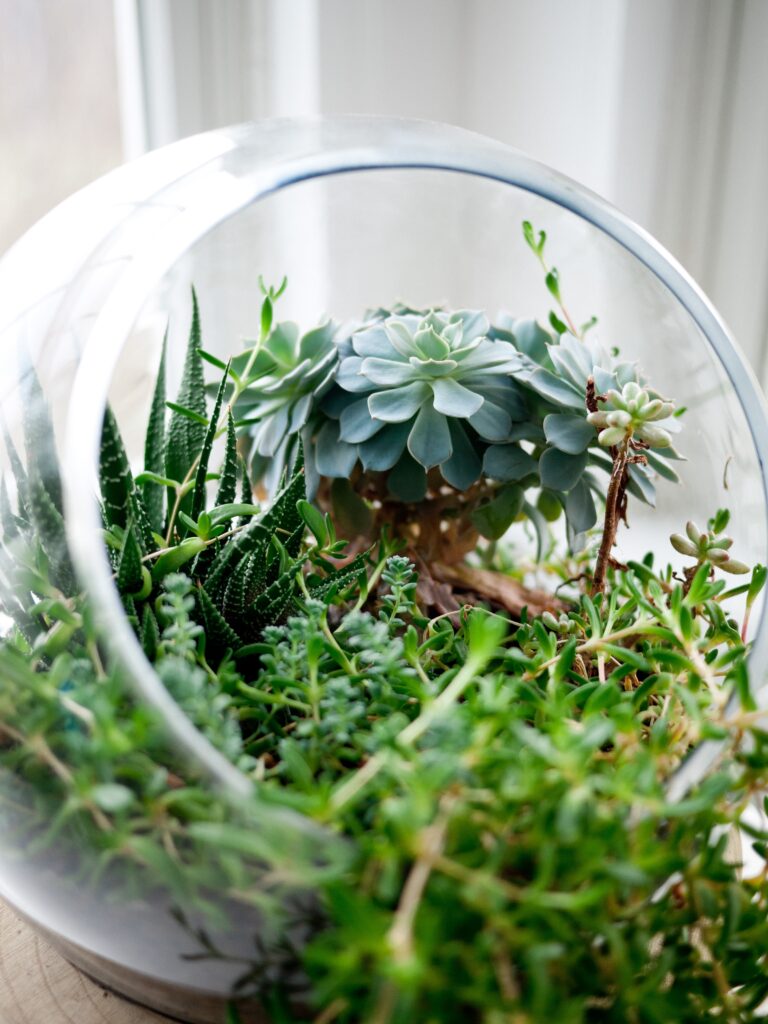
Plants to Avoid in Reptile Habitats
While there is a wide range of plants that are suitable for reptile habitats, there are certain plants that should be avoided due to their toxicity or harmful effects on reptiles. These plants include:
Dieffenbachia
Dieffenbachia, also known as dumb cane, contains toxic compounds that can cause irritation and swelling in the mouth and throat if ingested by reptiles. It is best to avoid this plant in reptile habitats to prevent any potential harm.
Elephant Ear
Elephant ear plants, scientifically known as Alocasia and Colocasia, contain calcium oxalate crystals that can cause irritation and swelling if ingested by reptiles. It is best to avoid these plants in reptile habitats and opt for safer alternatives.
Daffodil
Daffodils contain toxic alkaloids that can be harmful if ingested by reptiles. These plants should be avoided in reptile habitats to ensure the safety and well-being of your pet.
Ivy
Ivy plants, including English ivy and pothos, can be toxic to reptiles if ingested. It is recommended to avoid these plants in reptile habitats and opt for non-toxic alternatives.
Pothos
While pothos is a popular choice for some reptile habitats, it is important to note that it can cause digestive issues if ingested in large quantities. It is best to use pothos with caution and monitor your reptile’s behavior closely.
Using Live vs. Artificial Plants in Reptile Habitats
When deciding between live and artificial plants for your reptile habitat, there are advantages to consider for both options. It ultimately depends on your personal preferences and the specific needs of your reptile.
Advantages of Live Plants
Live plants offer several benefits for reptile habitats. They provide a more natural and realistic environment, promoting the overall well-being and mental stimulation of your pet. Live plants can help in maintaining humidity levels, improving air quality, and reducing stress for your reptile. They also contribute to the aesthetic appeal of the terrarium, creating a visually pleasing and vibrant space.
Advantages of Artificial Plants
Artificial plants have their own set of advantages for reptile habitats. They require minimal maintenance, as there is no need for watering or fertilizing. Artificial plants also do not carry the risk of introducing pests or diseases into the terrarium. They are typically more durable and long-lasting compared to live plants, making them a cost-effective option in the long run.
Considerations for Using Artificial Plants
While artificial plants offer convenience and durability, there are a few considerations to keep in mind. Ensure that the artificial plants are made from non-toxic materials to prevent any potential harm to your reptile. It is important to regularly clean and dust the artificial plants to prevent the accumulation of debris and bacteria. Additionally, artificial plants may not offer the same environmental benefits as live plants, such as improving air quality and maintaining humidity levels.
Mixing Live and Artificial Plants
An alternative approach is to mix both live and artificial plants in your reptile habitat. This allows you to enjoy the benefits of both options while creating a visually pleasing and low-maintenance environment. Live plants can be strategically placed to provide natural hiding spots and climbing structures, while artificial plants can be used to fill in certain areas or add additional greenery.
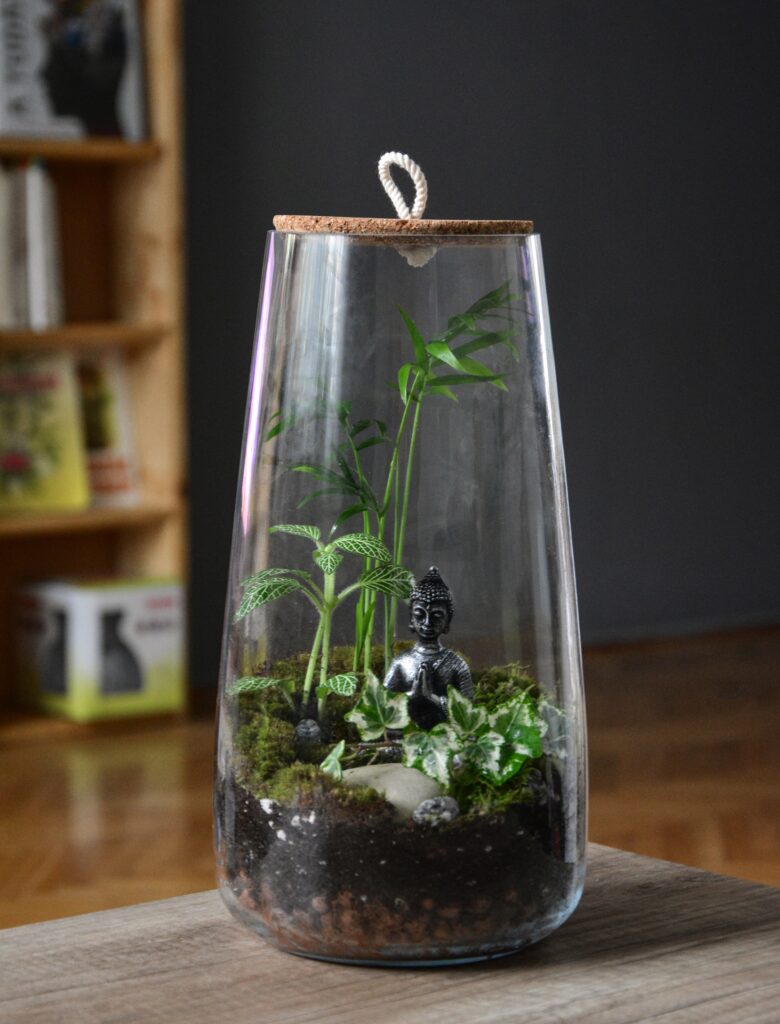
Plant Placement and Arrangement in Reptile Habitats
The placement and arrangement of plants are essential in creating a natural and functional reptile habitat. Consider the following aspects when arranging plants in your terrarium:
Creating Natural Climbing Structures
Many reptiles are natural climbers and benefit from having vertical elements in their habitat. By strategically placing branches, vines, or taller plants, you can create natural climbing structures for your reptile to explore and enjoy.
Providing Hiding Places
Reptiles often seek shelter and hiding spots for security and stress relief. Use plants with dense foliage or plant arrangements that create natural hiding places within the terrarium. These hiding spots not only provide a sense of security for your reptile but also make the habitat feel more natural and authentic.
Enhancing Visual Appeal
Consider the visual appeal when arranging plants in your reptile habitat. Vary the heights, textures, and colors of plants to create an aesthetically pleasing and visually engaging environment. Take into account the natural habitat of your reptile species and try to replicate it as closely as possible.
Avoiding Overcrowding
While it may be tempting to fill up the terrarium with as many plants as possible, it is important to avoid overcrowding. Overcrowded plants can lead to poor air circulation, hinder the movement of your reptile, and create a cluttered and unappealing habitat. Ensure that each plant has enough space to grow and thrive without encroaching on other plants or the reptile’s living space.
Terrarium Planting Techniques
Proper planting techniques are essential to ensure the health and longevity of the plants in your reptile habitat. Consider the following techniques when planting:
Choosing Appropriate Substrate
Select an appropriate substrate or growing medium for your plants. Different plants have different substrate requirements, ranging from well-draining soil for arid plants to specialized aquatic substrate for semi-aquatic species. It is important to research the specific substrate needs of each plant before planting.
Planting Methods
When planting live plants, ensure that the roots are properly covered with soil or substrate. Gently remove the plants from their pots and make a small hole in the substrate. Place the plant in the hole and lightly pack the substrate around the roots to secure the plant in place.
Watering Techniques
Proper watering techniques are crucial for plant health. Avoid overwatering or underwatering, as both can have negative effects on the plants. Research the specific watering requirements of each plant and monitor the moisture levels in the terrarium. Consider using a spray bottle or misting system to provide adequate moisture without oversaturating the soil or substrate.
Fertilization Considerations
Some plants may require additional nutrients to thrive in the terrarium. Research the specific fertilization needs of each plant and consider using a slow-release fertilizer or a diluted liquid fertilizer. Be cautious with fertilization, as excessive nutrients can harm your reptile and disrupt the overall balance of the habitat.
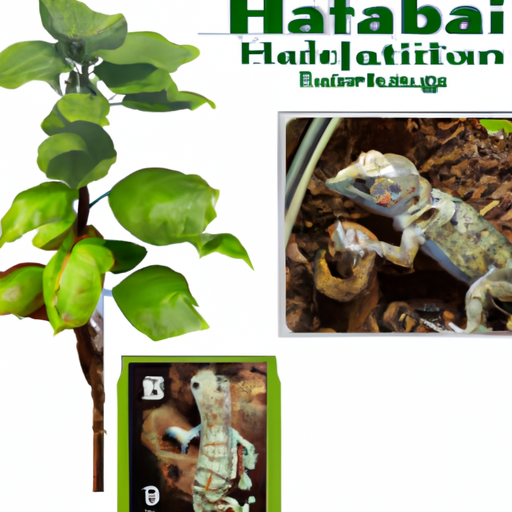
Plant Maintenance in Reptile Habitats
Proper plant maintenance is essential to ensure the health and vitality of the plants in your reptile habitat. Consider the following maintenance practices:
Regular Pruning and Trimming
Regularly prune and trim the plants to control their growth and maintain a neat appearance. Remove any dead or dying leaves, stems, or flowers to prevent the spread of diseases or pests. Pruning also helps to keep the plants in proportion to the terrarium and prevents overcrowding.
Monitoring Plant Health
Monitor the health of the plants closely. Look for signs of pests, diseases, or nutrient deficiencies and take necessary action promptly. Regularly inspect the leaves, stems, and roots for any abnormalities or discoloration. Address any issues promptly to prevent further damage to the plants or the reptile.
Troubleshooting Common Plant Issues
Common plant issues in terrariums include fungal infections, root rot, and nutrient deficiencies. Research common plant issues and their respective solutions to effectively troubleshoot any problems that may arise. Promptly addressing these issues will help maintain the overall health of the plants in the terrarium.
Replacing Old or Damaged Plants
As time goes on, some plants may outgrow the terrarium or become damaged beyond repair. It is important to periodically assess the condition of the plants and replace any old or damaged ones. This ensures that the terrarium remains visually appealing and provides a healthy environment for your reptile.
Conclusion
Choosing the right plants for your terrarium is a crucial step in creating a natural and comfortable habitat for your reptile. Factors such as light requirements, temperature and humidity tolerance, size and growth rate, toxicity, and maintenance needs must be taken into consideration. Selecting suitable plant species for arid, tropical, or semi-aquatic reptile habitats will provide your pet with a beautiful and functional environment. Whether you choose live or artificial plants, proper placement, planting techniques, and maintenance are vital for the long-term health and well-being of both your reptile and the plants. With careful planning and research, you can create a stunning and thriving terrarium that your reptile will love to call home.
